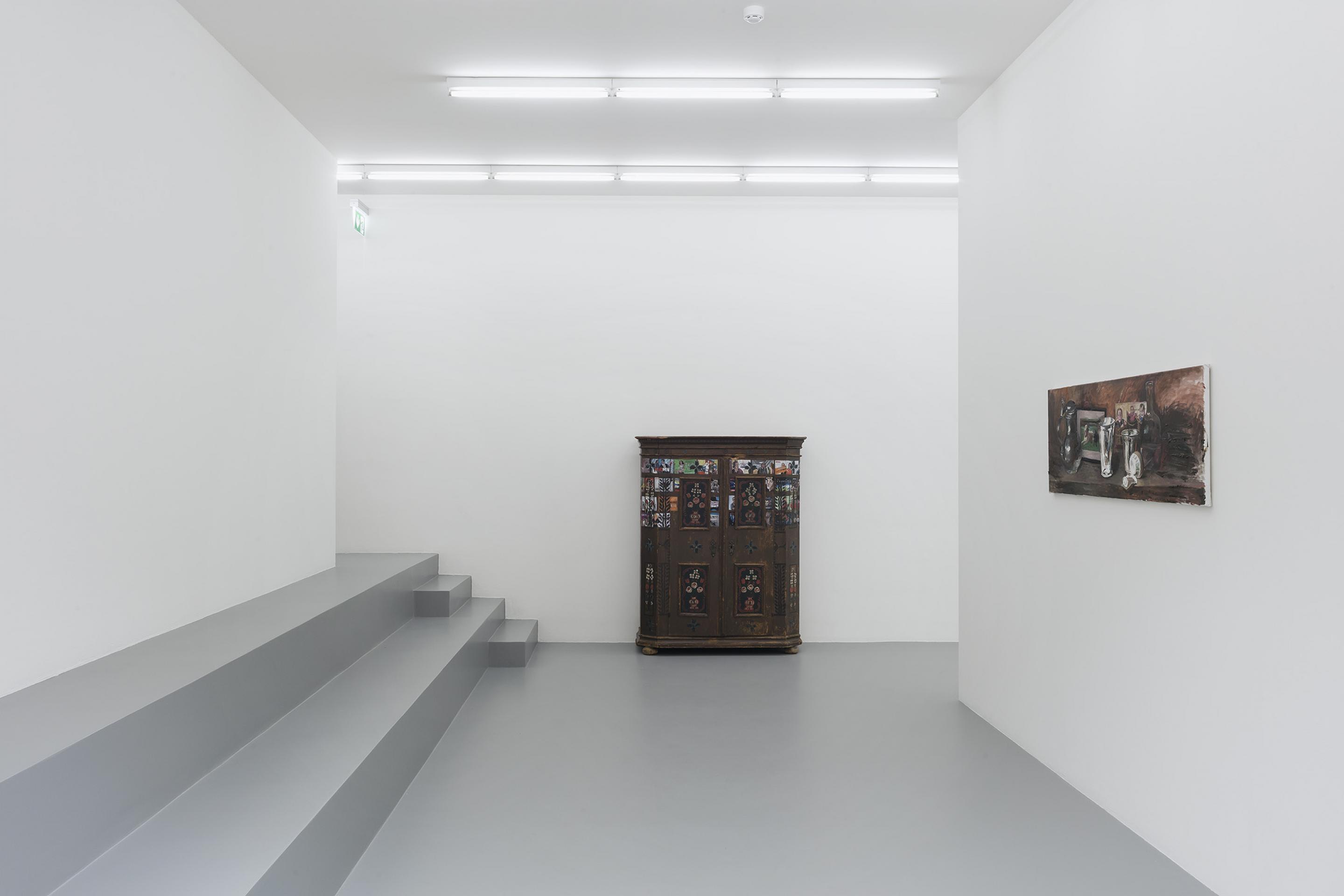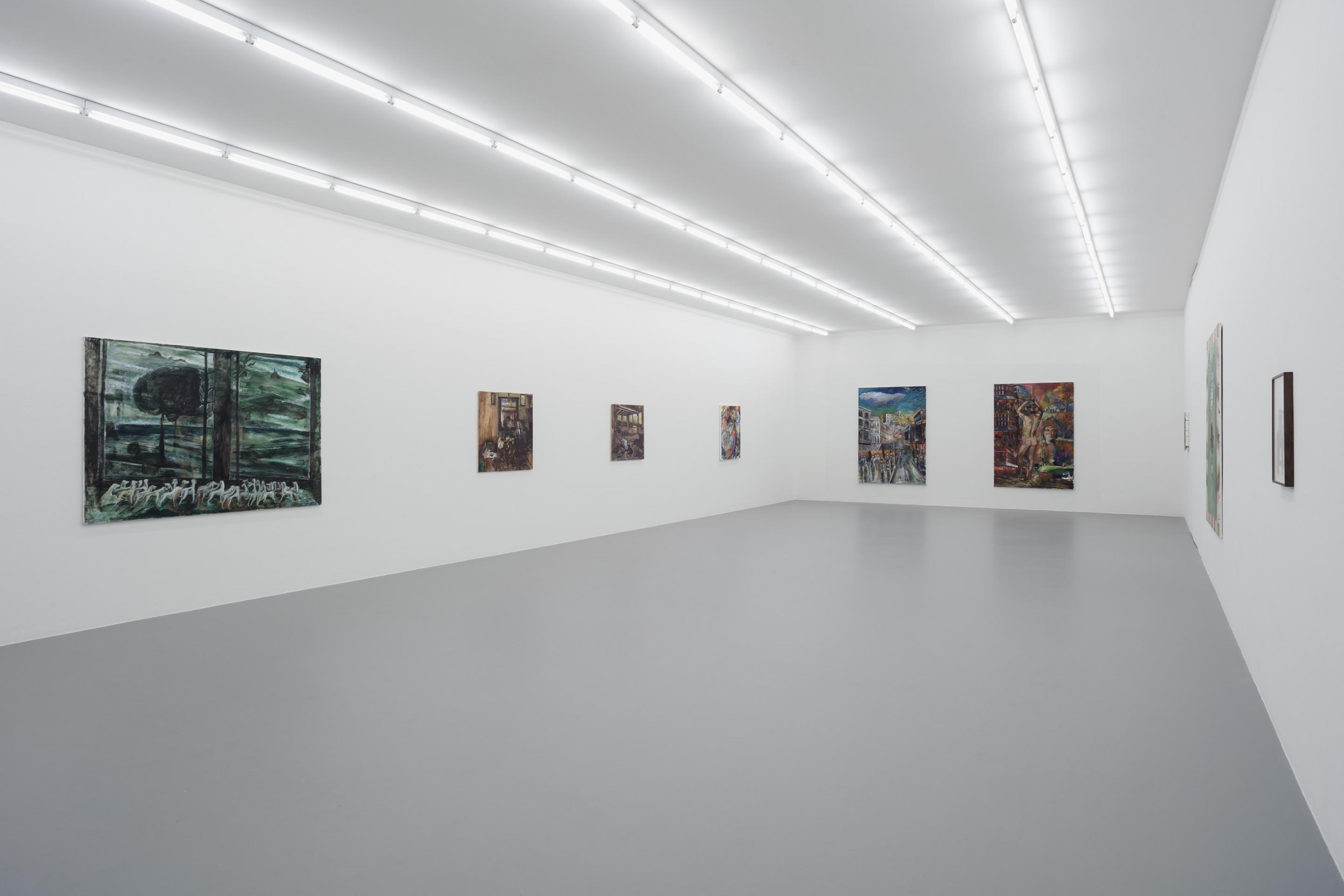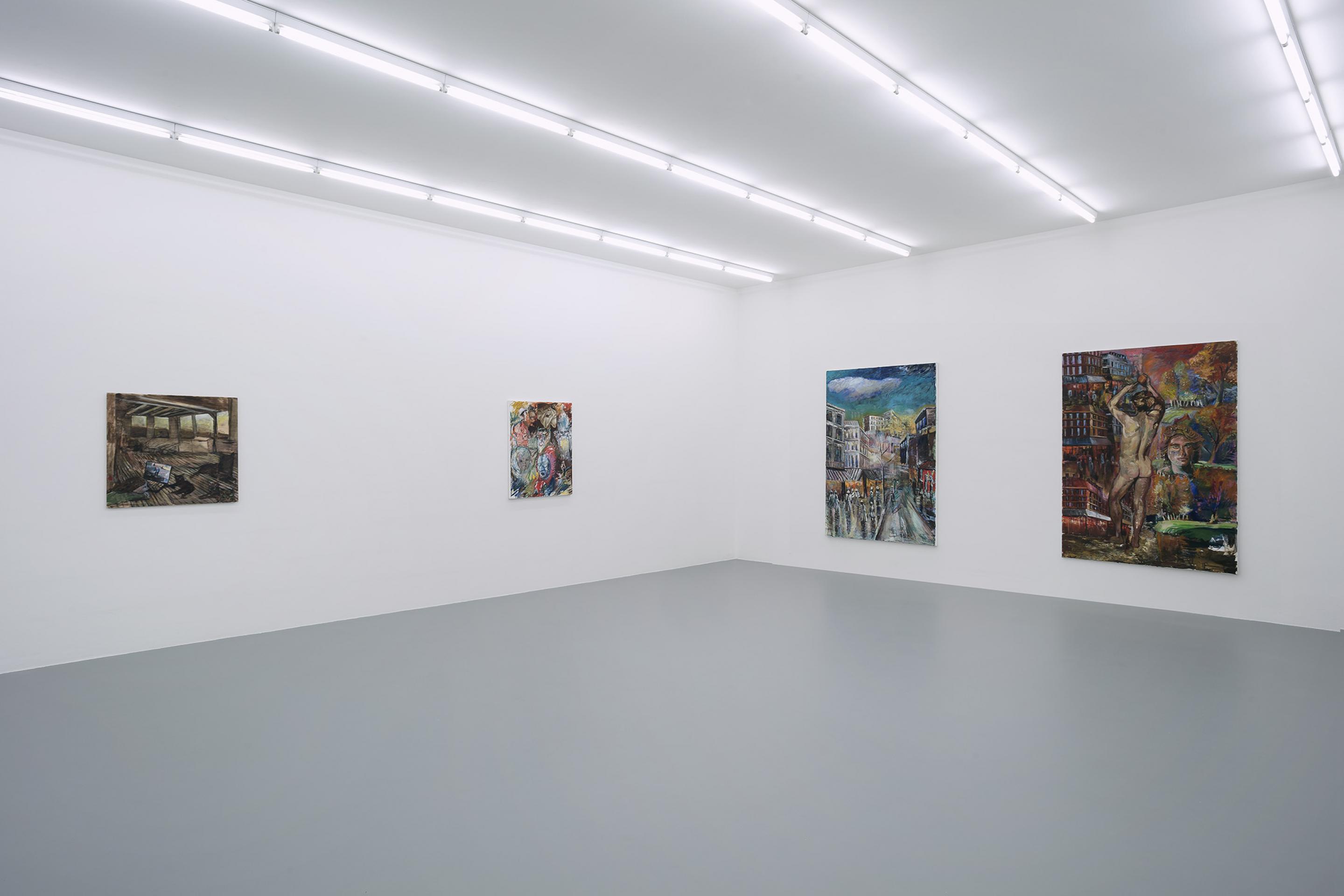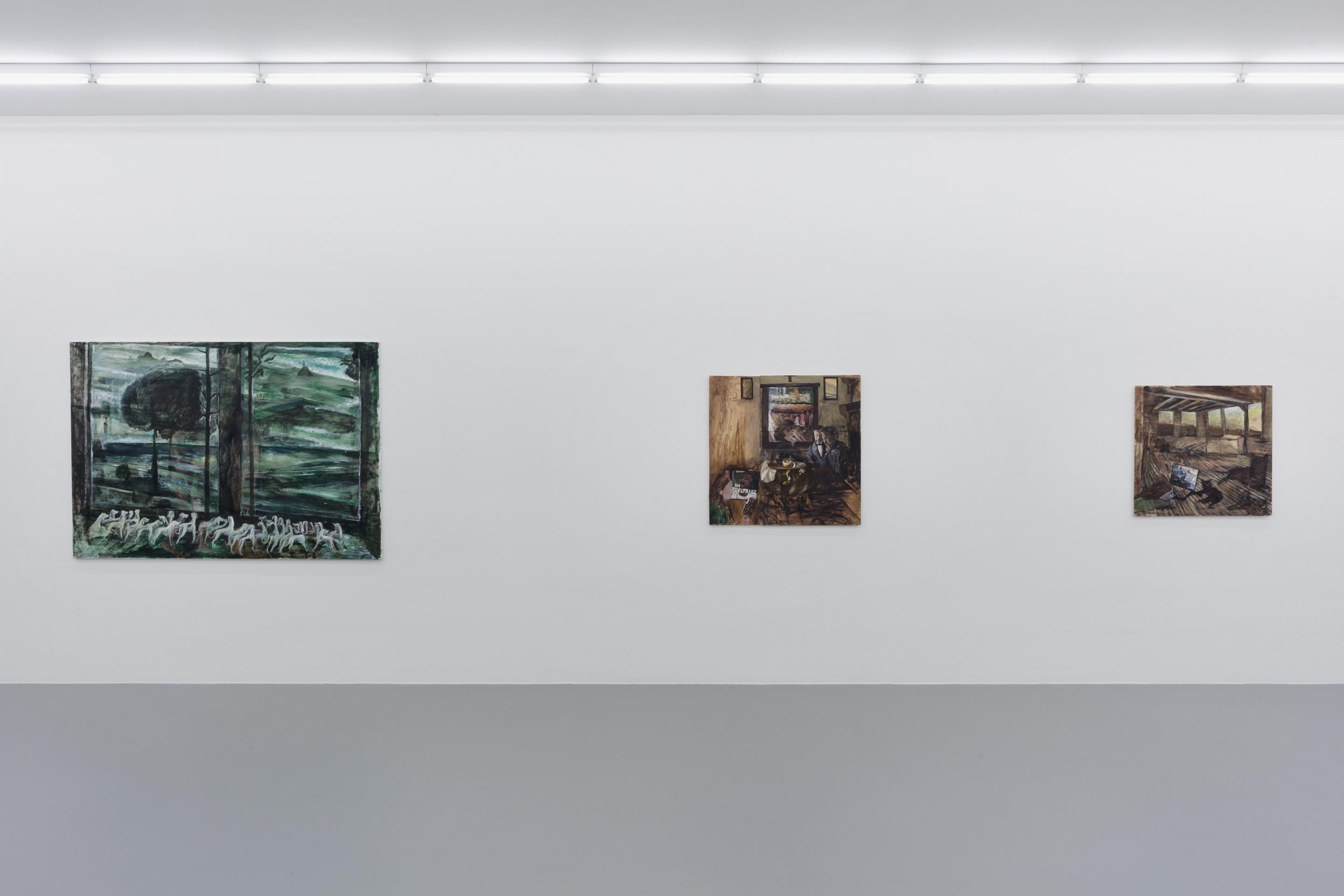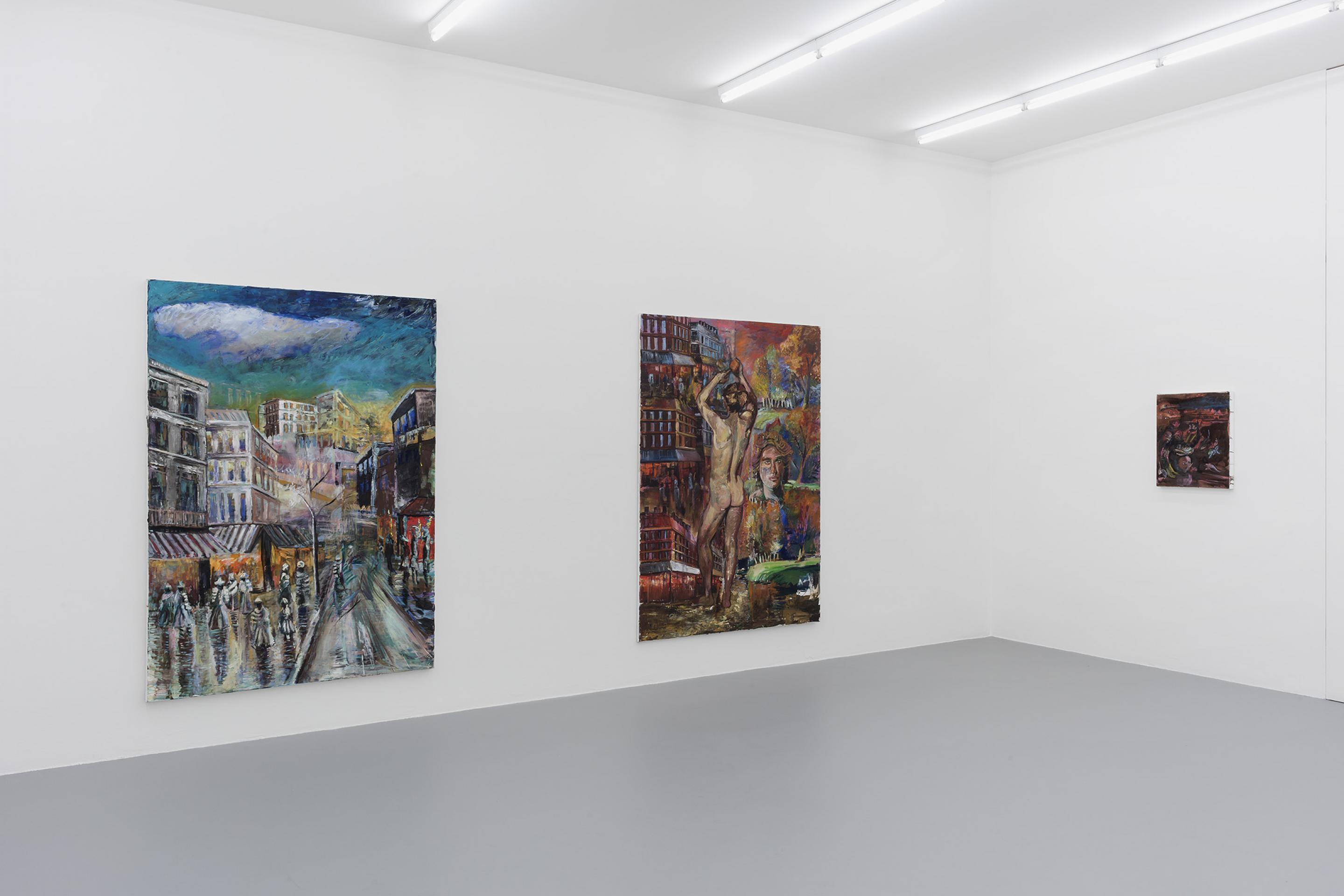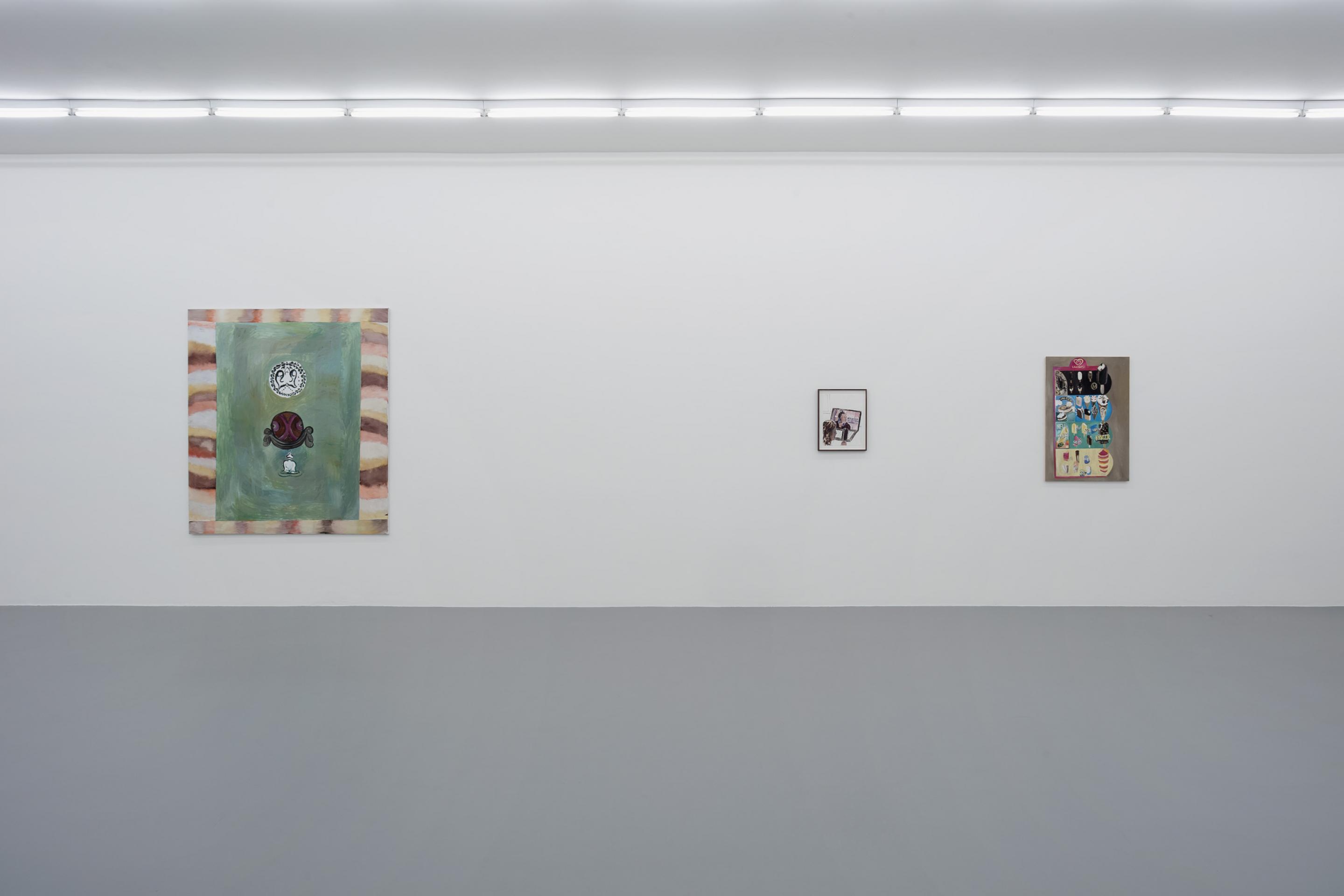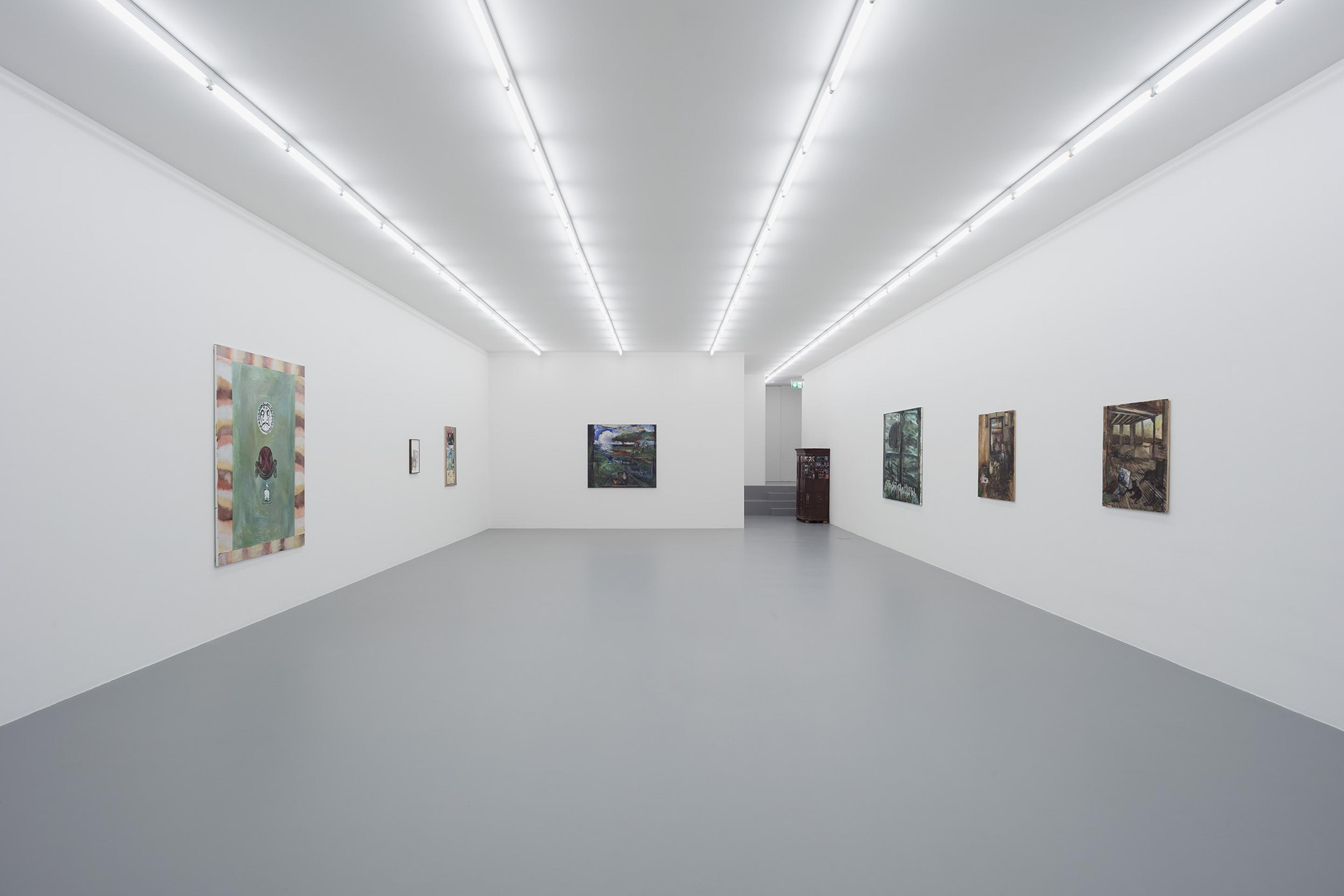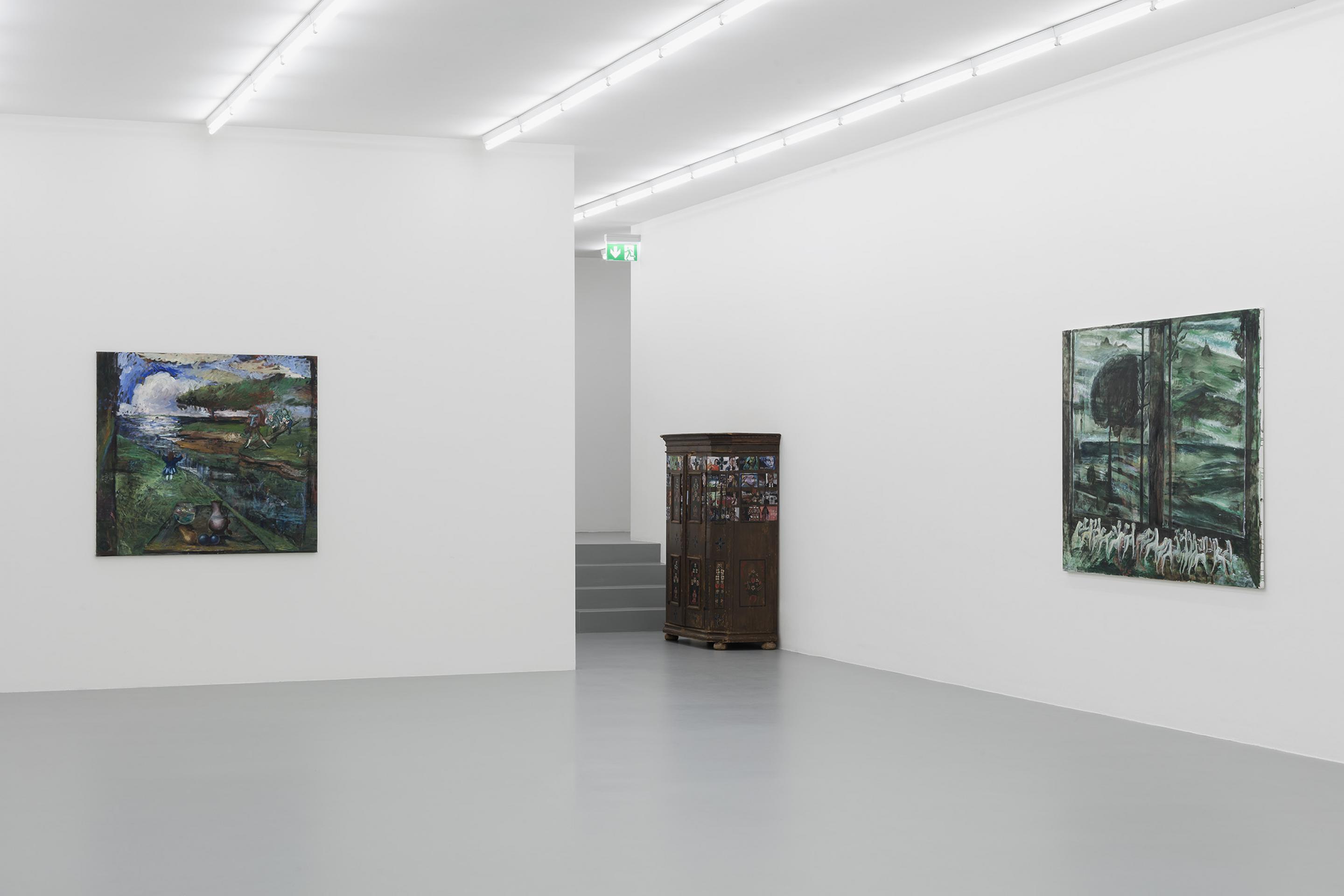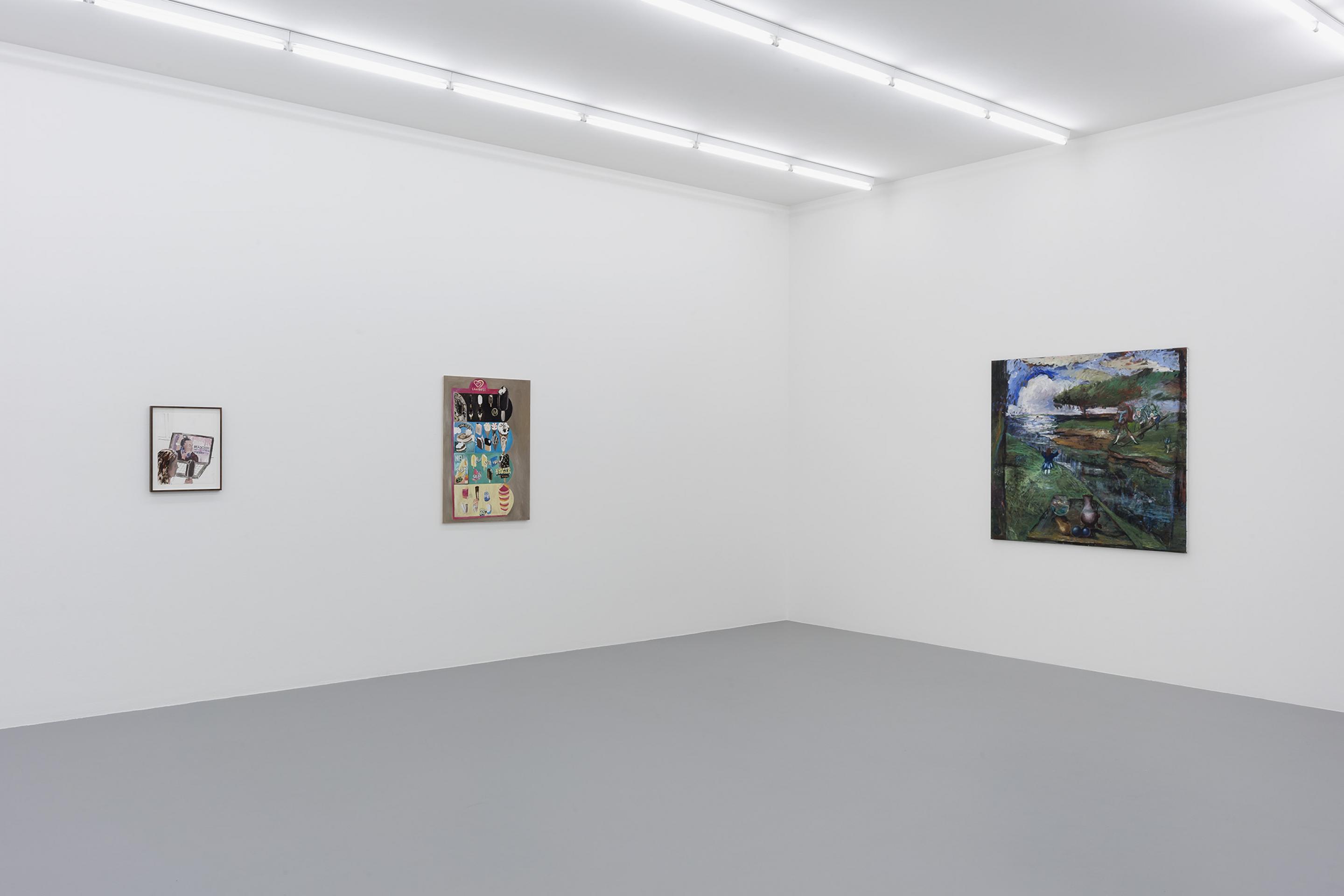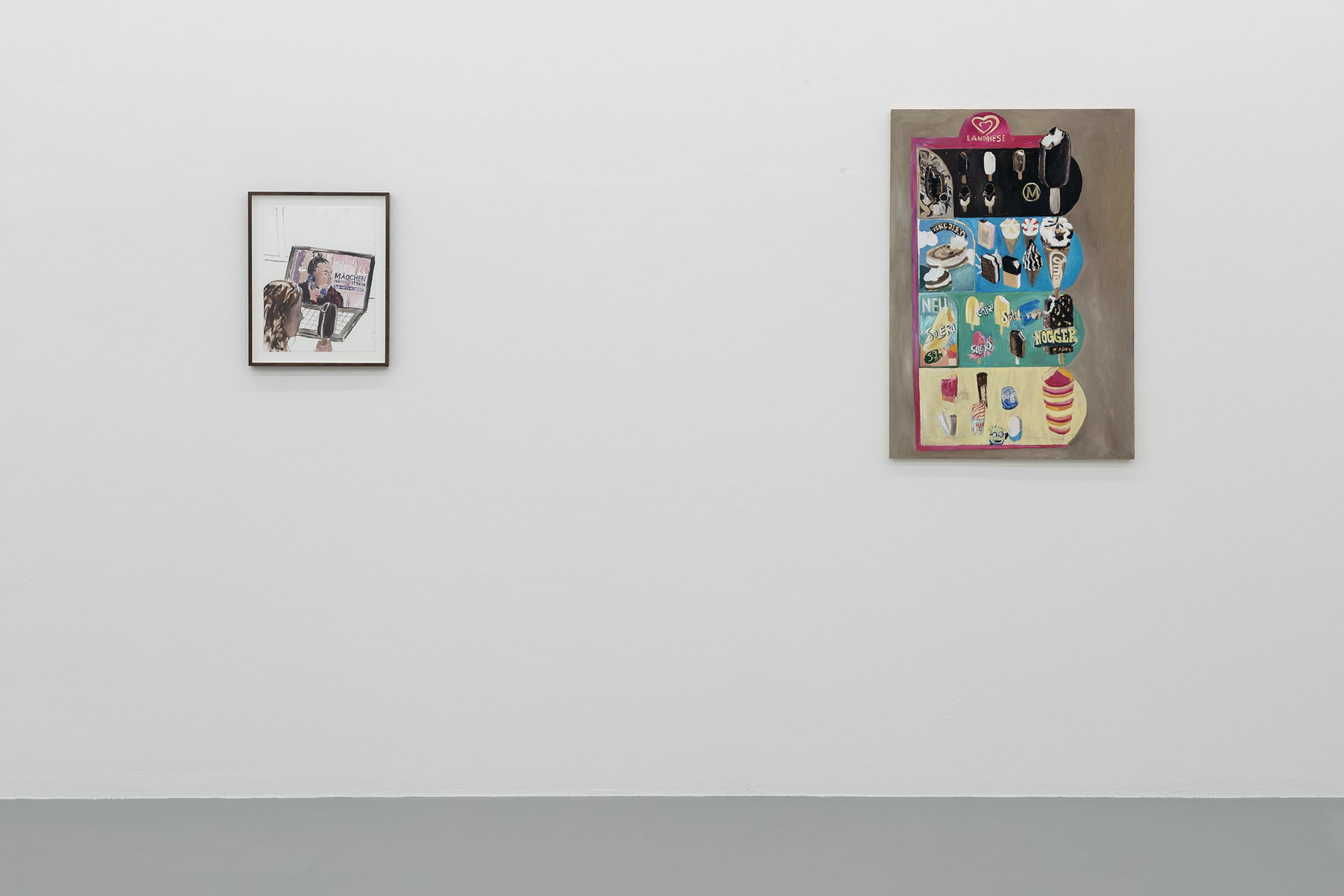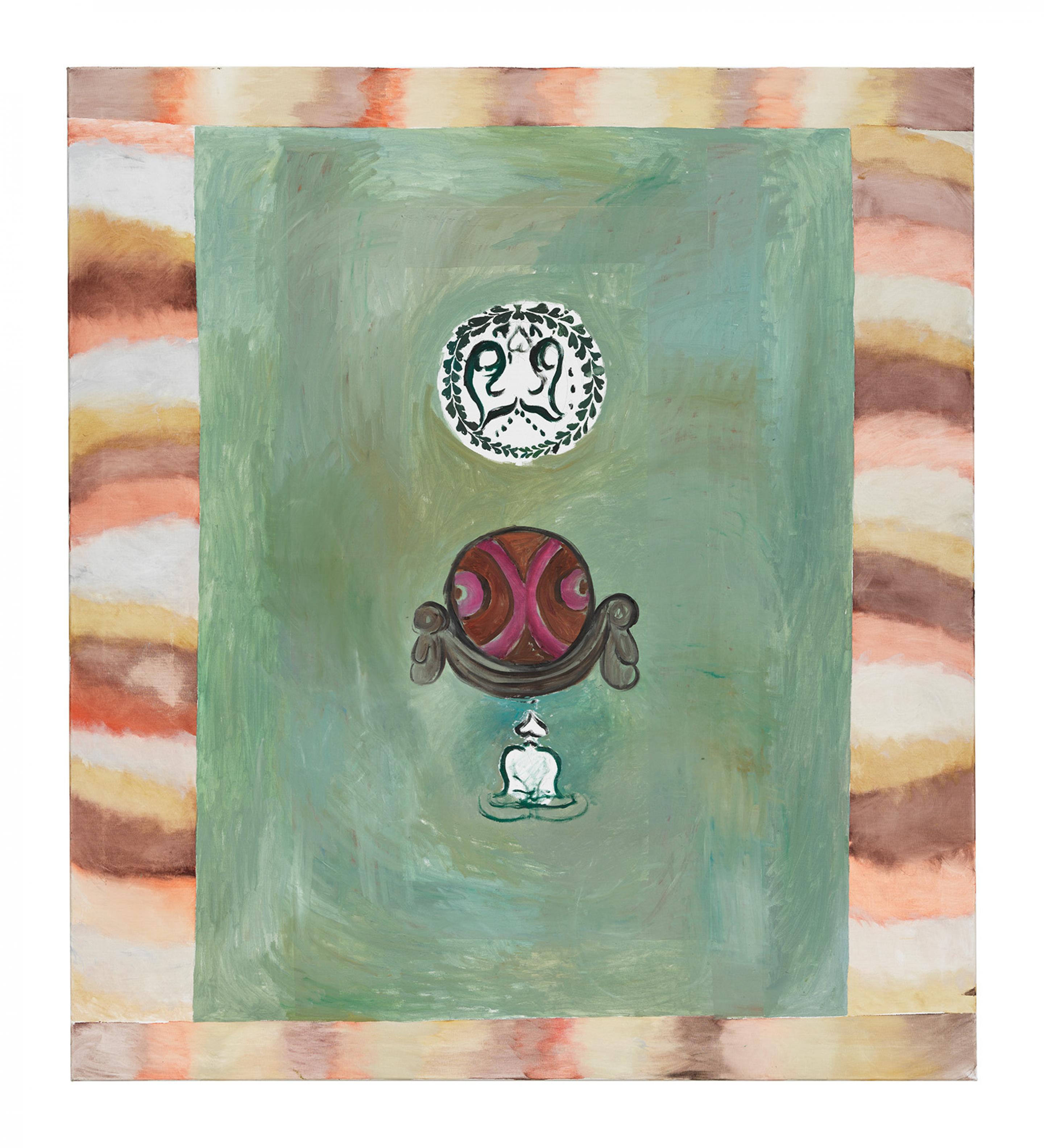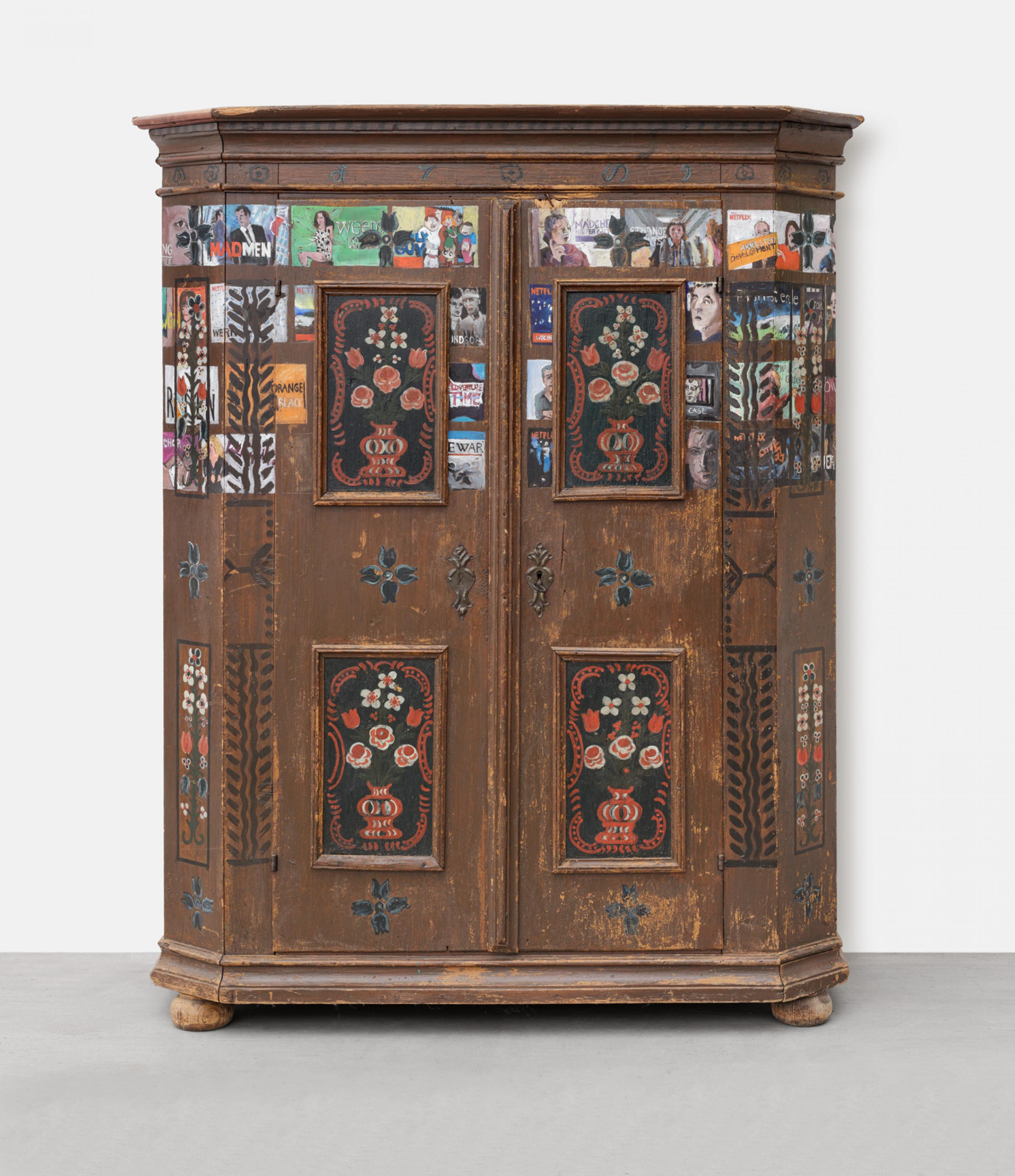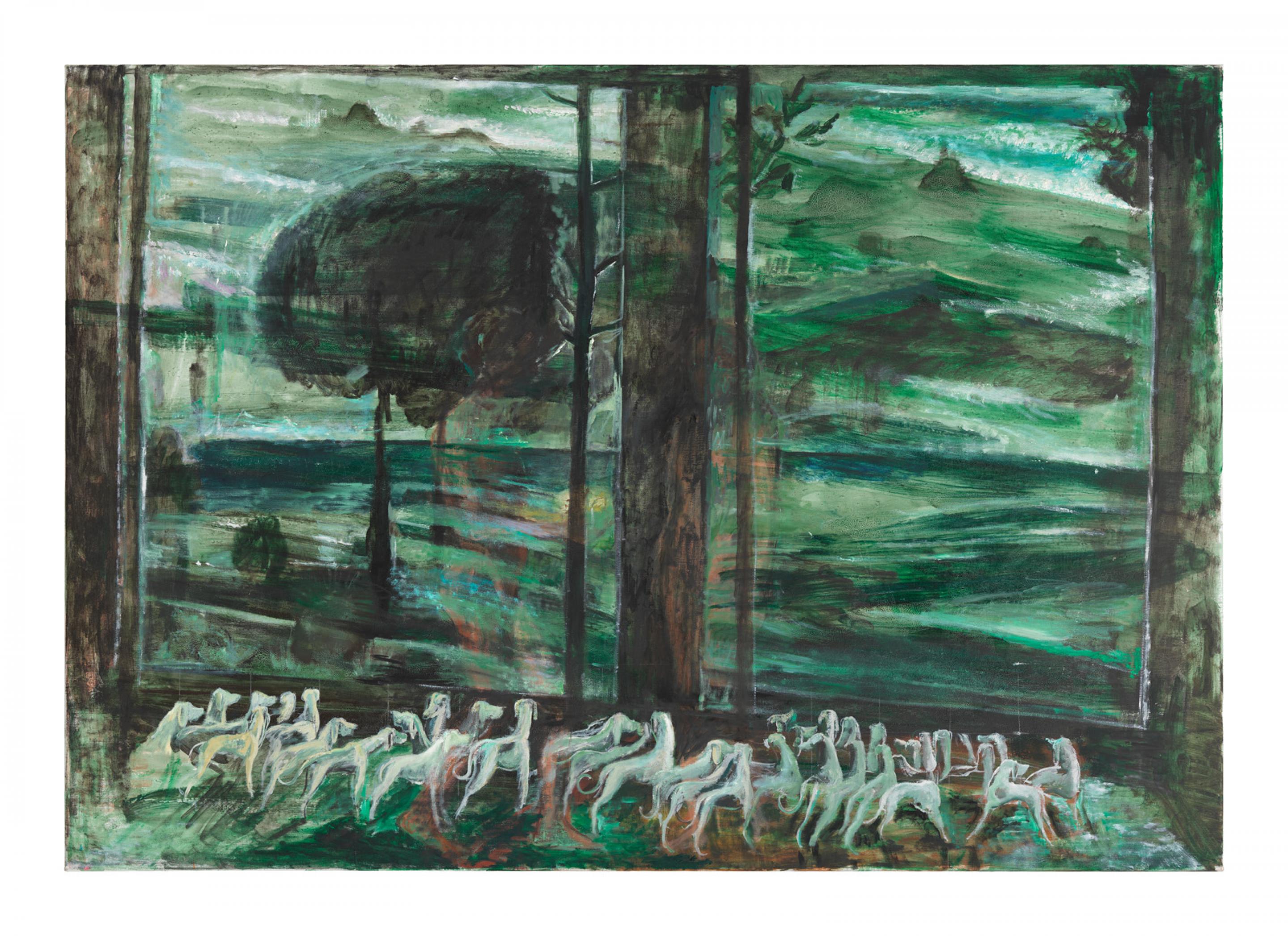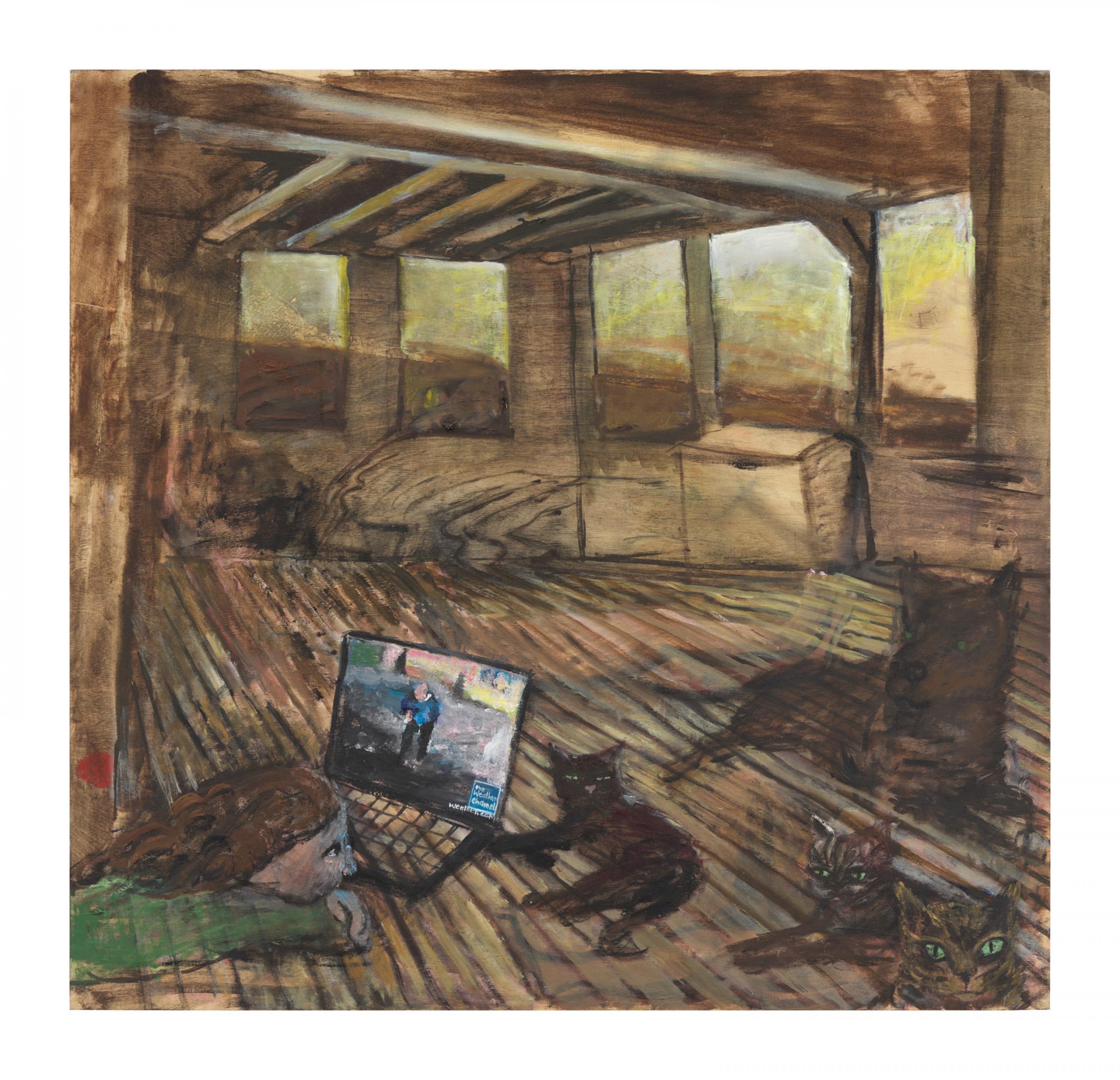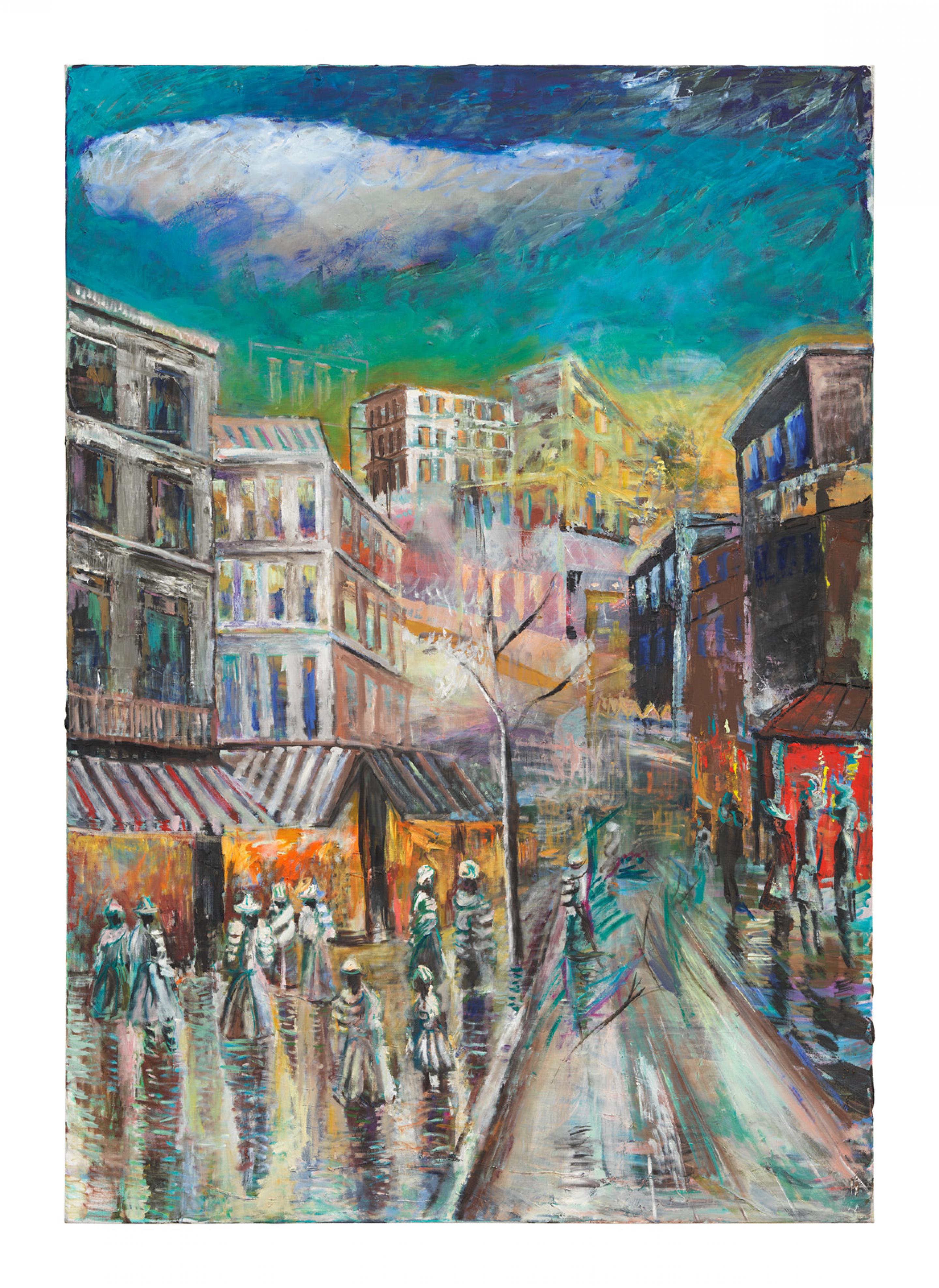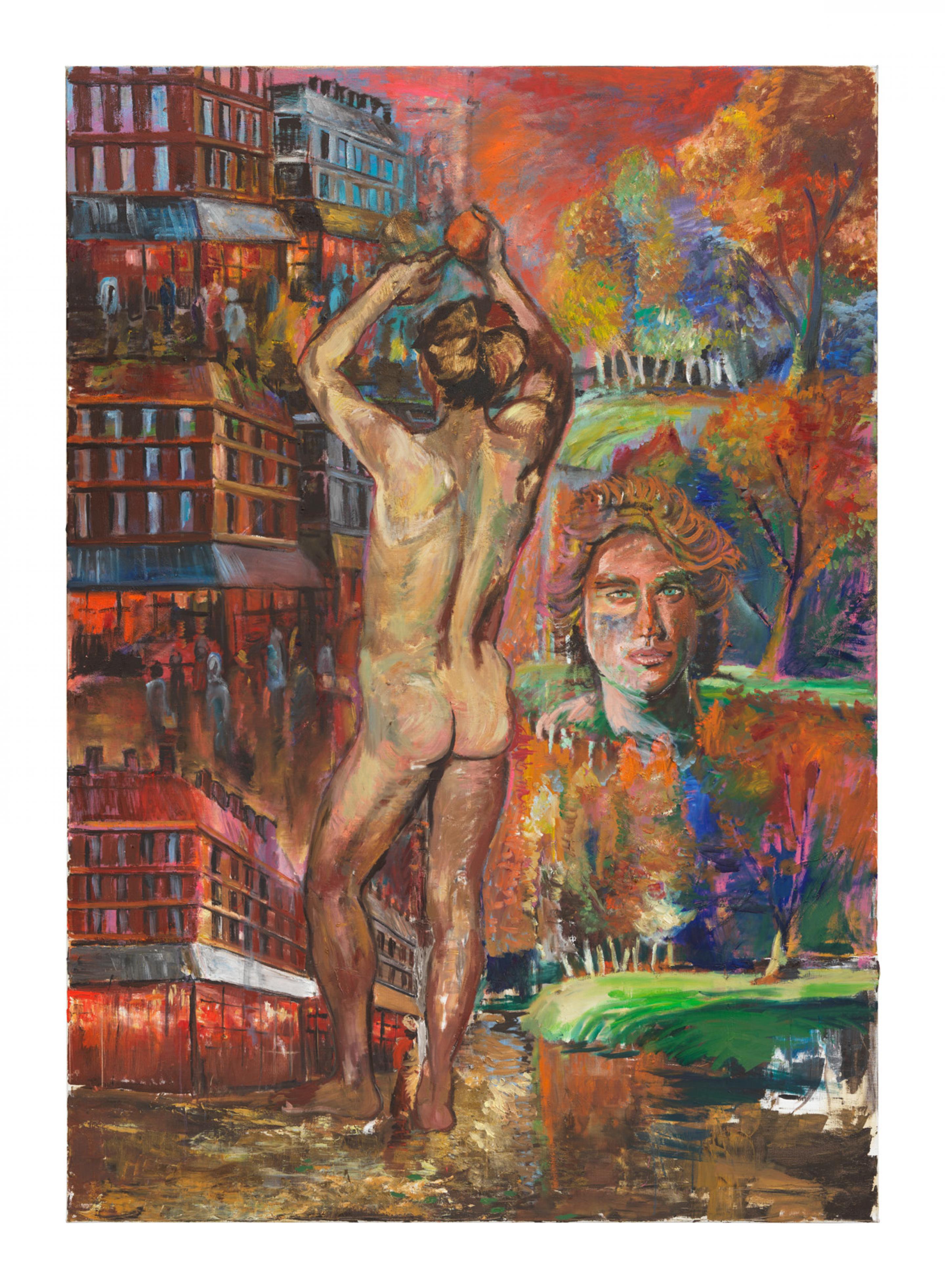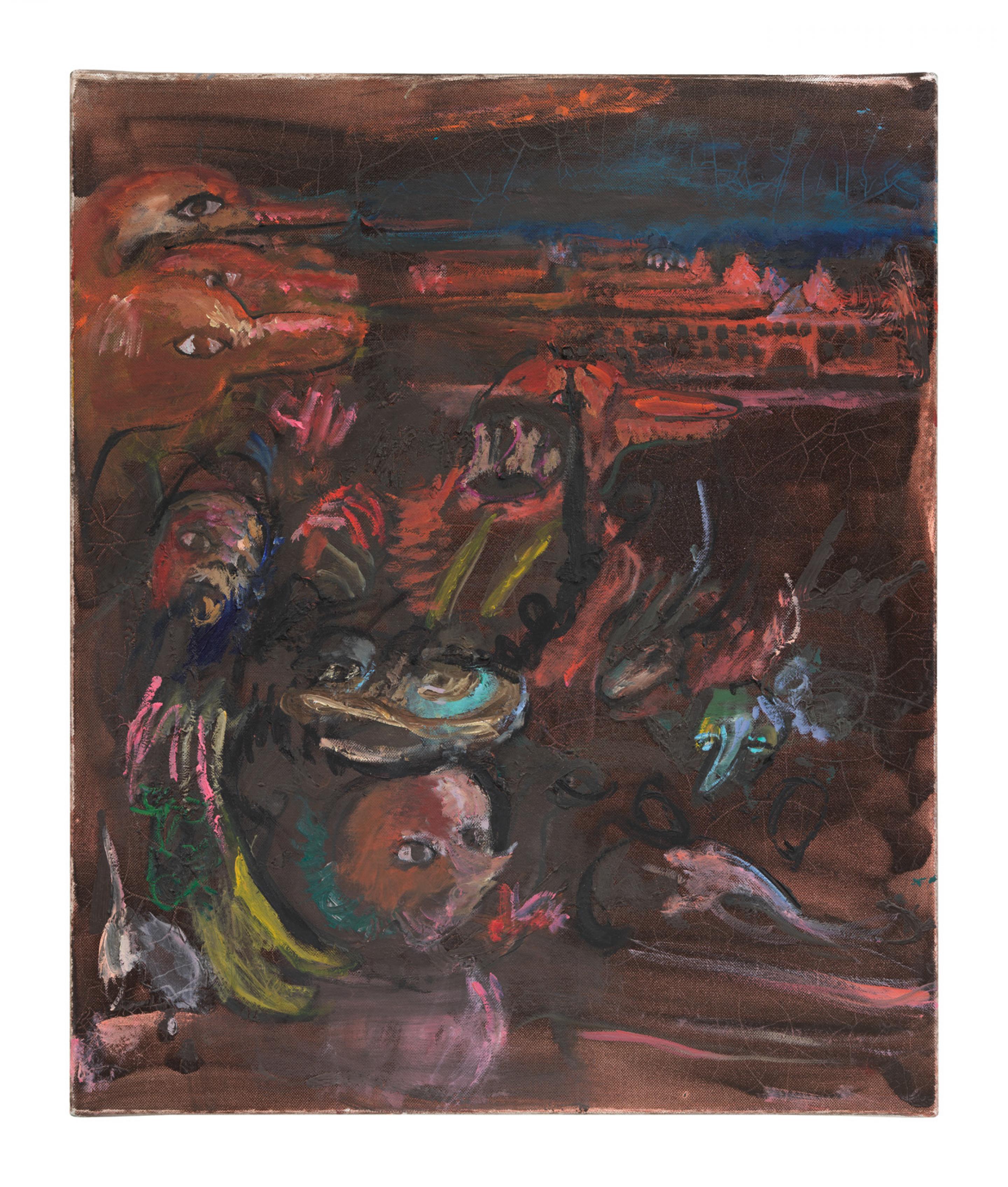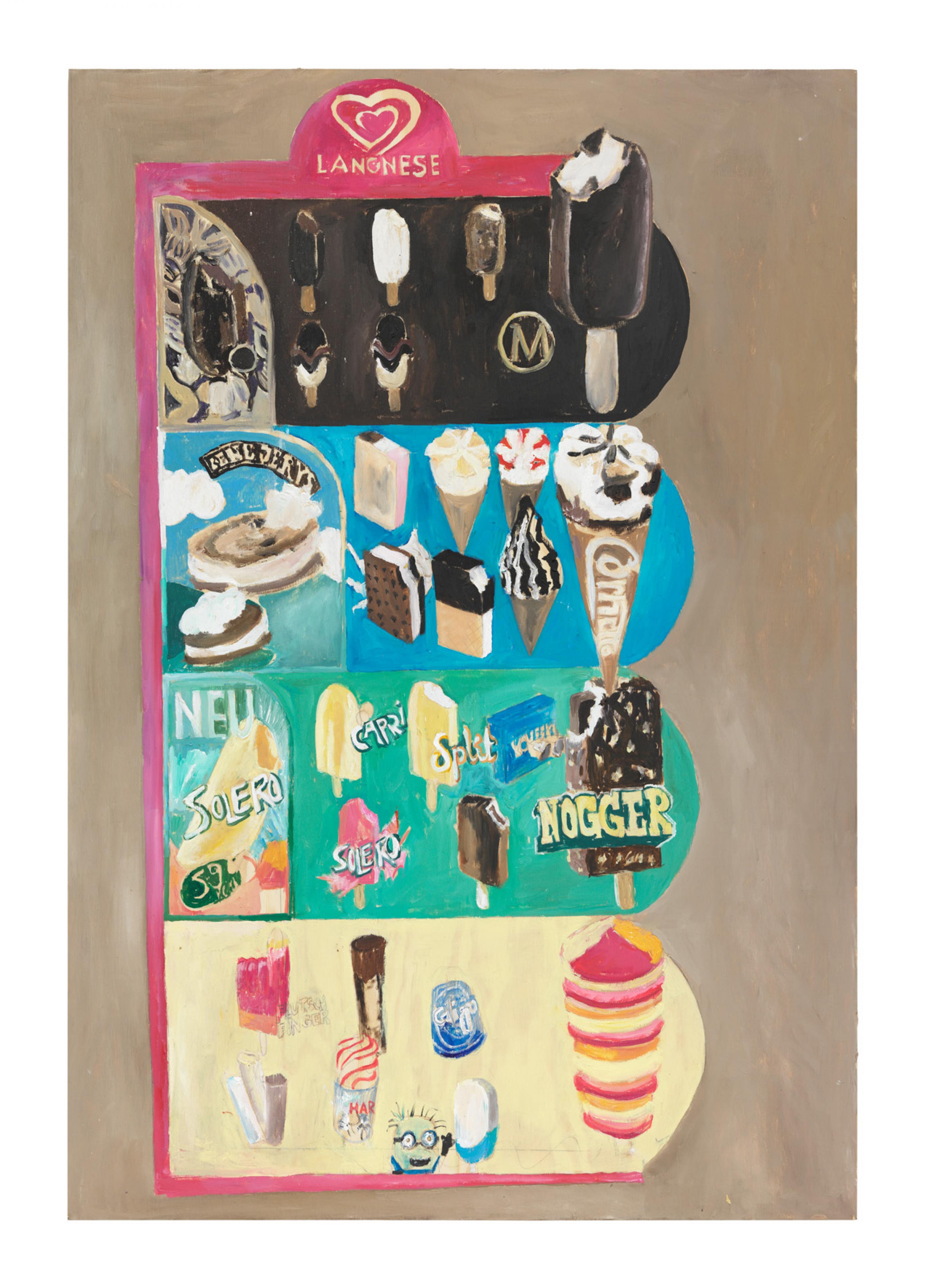AmelieVONWULFFEN
Ragazze dietro le sbarre (Mädchen hinter Gittern)
Gió Marconi, Milan
15.11.2018–31.01.2019
Ragazze dietro le sbarre (Mädchen hinter Gittern)
Gió Marconi, Milan
15.11.2018–31.01.2019
IT
Amelie von Wulffen
Ragazze dietro le sbarre (Mädchen hinter Gittern)
Inaugurazione: giovedì 15 novembre dalle 19 alle 21
15 novembre 2018 – 31 gennaio 2019
martedì-sabato, 11-19
Gió Marconi ha il piacere di annunciare Ragazze dietro le sbarre (Mädchen hinter Gittern) una mostra di nuovi lavori dell'artista tedesca Amelie von Wulffen, sua seconda personale con la galleria. Le opere più recenti di Amelie von Wulffen raccontano la sua lunga analisi della pittura come un medium che l’artista spesso sembra sperimentare senza consapevolezza di sé.
Von Wulffen venera la pittura, più di qualsiasi altro approccio alla creazione artistica, per la sua storia e attinge a questo medium dall'interno, prendendone in prestito i capitoli meno eccellenti. Le opere in mostra sono permeate dal gusto della pittura di genere, come quando von Wulffen accosta le bucce di limone ricurve, tipiche delle nature morte olandesi, alle pennellate filamentose dell'Espressionismo. Von Wulffen utilizza la schiettezza della tonalità marrone, peculiare della tavolozza tedesca - dalla pittura di genere del XVIII secolo fino ad Anselm Kiefer - come se fosse un genere tutto suo. Von Wulffen non tralascia nemmeno i gradi più bassi della pittura - nelle sue opere si leggono brani chiaramente ispirati ai prodotti di massa, come i quadri-suovenir, che si trovano nelle località di villeggiatura.
In Der Nackte im Park (Il nudo nel parco), le immagini sono dipinte una sull'altra senza sosta, come in una sorta di tic compulsivo. Un angolo di strada e un paesaggio autunnale sono i soggetti principali della tela. Al centro un nudo sta raccogliendo un'arancia. Queste sono le tipiche cose che i bambini pensano che gli artisti dipingano, ma non è quello che fanno davvero. Nel dipingere questi soggetti, von Wulffen si concede una breve pausa dalla realtà e illustra il divario tra le diverse possibilità di comprensione del medium. La pittura ha spesso un dominio più ampio e variegato rispetto a quello che solitamente le riconosciamo ed è chiamata ad agire in una miriade di contesti, molti dei quali sono stati effettivamente ostracizzati, ma non nell’opera di Amelie von Wulffen.
Una natura morta - Kinder, Hunde, Silber (Bambini, cani, argento) – presenta gli elementi caratteristici del genere: la brocca d’argento, i bicchieri e la bottiglia di vetro, il limone sbucciato a metà; ma sono due fotografie incorniciate a svelare l’ambientazione contemporanea. Sono di quelle che si trovano nelle case di periferia: teneri bambini in posa, cani dipinti. La sensazione è la stessa di un fratello o una sorella che chiamano per parlare di una questione familiare senza senso quando qualcuno cerca di masturbarsi.
Im Todestrakt (Nel braccio della morte) mostra la scena di una sobria cena attorno ad un tavolo. Appollaiata in un angolo, una donna sta mangiando un gelato e guardando una serie che parla di detenuti nel braccio della morte. La realtà sembra interrompere la fantasia, o vice versa. Forse ignorare la realtà è una nuova forma di condivisione. In un'altra opera un volto isterico chiede se abbiamo visto il nuovo House of Cards.
Questo dualismo corre attaraverso la pittura di Amelie von Wullfen come un treno di pensieri conflittuali, oscillanti tra impulso e razionalità, repressione e apparenza, individuale e universale. Le decisioni difficili sono messe da parte per lasciare spazio alla scelta del gusto di Magnum o dello show su Netflix. Ragazze dietro le sbarre (Mädchen hinter Gittern) dipinge un ritratto non solo della lunga e ampia storia della pittura, ma dell’interiorità individuale, dove ciascuno di noi trascorre la maggior parte del suo tempo.
Patrick Armstrong
Amelie von Wulffen è nata a Breitenbrunn, in Germania, nel 1966. Ha studiato all’Academy of Fine Arts di Monaco e ha insegnato pittura all’Academy of Fine Arts di Vienna dal 2006 al 2011. Attualmente vive e lavora a Berlino.
Il lavoro di Amelie von Wulffen sarà prossimamente esposto presso: Kunsthalle Bern, Berna (2019) e KW Institute for Contemporary Art, Berlino (2020).
Tra le sue recenti mostre personali: Studio Voltaire, Londra (2017); Pinakothek der Moderne, Monaco (2015); Portikus, Francoforte (2013); Aspen Art Museum, Aspen (2012); Kunstverein Düsseldorf (2006); Centre Pompidou, Parigi (2005); Museum of Contemporary Art, Basilea (2005)
Il suo lavoro è stato esposto durante la 50ª Biennale di Venezia (2003) e a Manifesta 5 (2004)
Le sue opere fanno parte di importanti collezioni museali tra cui: MoMA, New York; Museum of Contemporary Art, Los Angeles; Städel Museum, Francoforte; Pinakothek der Moderne, Monaco; Centre Pompidou, Parigi; Hammer Museum, Los Angeles; Collection of Contemporary Art of the Federal Republic of Germany, Bonn; Staatliche Museen zu Berlin, Berlino; Fonds régional d'art contemporain, Auvergne and Museum of Contemporary Art, Friburgo.
Ragazze dietro le sbarre (Mädchen hinter Gittern)
Inaugurazione: giovedì 15 novembre dalle 19 alle 21
15 novembre 2018 – 31 gennaio 2019
martedì-sabato, 11-19
Gió Marconi ha il piacere di annunciare Ragazze dietro le sbarre (Mädchen hinter Gittern) una mostra di nuovi lavori dell'artista tedesca Amelie von Wulffen, sua seconda personale con la galleria. Le opere più recenti di Amelie von Wulffen raccontano la sua lunga analisi della pittura come un medium che l’artista spesso sembra sperimentare senza consapevolezza di sé.
Von Wulffen venera la pittura, più di qualsiasi altro approccio alla creazione artistica, per la sua storia e attinge a questo medium dall'interno, prendendone in prestito i capitoli meno eccellenti. Le opere in mostra sono permeate dal gusto della pittura di genere, come quando von Wulffen accosta le bucce di limone ricurve, tipiche delle nature morte olandesi, alle pennellate filamentose dell'Espressionismo. Von Wulffen utilizza la schiettezza della tonalità marrone, peculiare della tavolozza tedesca - dalla pittura di genere del XVIII secolo fino ad Anselm Kiefer - come se fosse un genere tutto suo. Von Wulffen non tralascia nemmeno i gradi più bassi della pittura - nelle sue opere si leggono brani chiaramente ispirati ai prodotti di massa, come i quadri-suovenir, che si trovano nelle località di villeggiatura.
In Der Nackte im Park (Il nudo nel parco), le immagini sono dipinte una sull'altra senza sosta, come in una sorta di tic compulsivo. Un angolo di strada e un paesaggio autunnale sono i soggetti principali della tela. Al centro un nudo sta raccogliendo un'arancia. Queste sono le tipiche cose che i bambini pensano che gli artisti dipingano, ma non è quello che fanno davvero. Nel dipingere questi soggetti, von Wulffen si concede una breve pausa dalla realtà e illustra il divario tra le diverse possibilità di comprensione del medium. La pittura ha spesso un dominio più ampio e variegato rispetto a quello che solitamente le riconosciamo ed è chiamata ad agire in una miriade di contesti, molti dei quali sono stati effettivamente ostracizzati, ma non nell’opera di Amelie von Wulffen.
Una natura morta - Kinder, Hunde, Silber (Bambini, cani, argento) – presenta gli elementi caratteristici del genere: la brocca d’argento, i bicchieri e la bottiglia di vetro, il limone sbucciato a metà; ma sono due fotografie incorniciate a svelare l’ambientazione contemporanea. Sono di quelle che si trovano nelle case di periferia: teneri bambini in posa, cani dipinti. La sensazione è la stessa di un fratello o una sorella che chiamano per parlare di una questione familiare senza senso quando qualcuno cerca di masturbarsi.
Im Todestrakt (Nel braccio della morte) mostra la scena di una sobria cena attorno ad un tavolo. Appollaiata in un angolo, una donna sta mangiando un gelato e guardando una serie che parla di detenuti nel braccio della morte. La realtà sembra interrompere la fantasia, o vice versa. Forse ignorare la realtà è una nuova forma di condivisione. In un'altra opera un volto isterico chiede se abbiamo visto il nuovo House of Cards.
Questo dualismo corre attaraverso la pittura di Amelie von Wullfen come un treno di pensieri conflittuali, oscillanti tra impulso e razionalità, repressione e apparenza, individuale e universale. Le decisioni difficili sono messe da parte per lasciare spazio alla scelta del gusto di Magnum o dello show su Netflix. Ragazze dietro le sbarre (Mädchen hinter Gittern) dipinge un ritratto non solo della lunga e ampia storia della pittura, ma dell’interiorità individuale, dove ciascuno di noi trascorre la maggior parte del suo tempo.
Patrick Armstrong
Amelie von Wulffen è nata a Breitenbrunn, in Germania, nel 1966. Ha studiato all’Academy of Fine Arts di Monaco e ha insegnato pittura all’Academy of Fine Arts di Vienna dal 2006 al 2011. Attualmente vive e lavora a Berlino.
Il lavoro di Amelie von Wulffen sarà prossimamente esposto presso: Kunsthalle Bern, Berna (2019) e KW Institute for Contemporary Art, Berlino (2020).
Tra le sue recenti mostre personali: Studio Voltaire, Londra (2017); Pinakothek der Moderne, Monaco (2015); Portikus, Francoforte (2013); Aspen Art Museum, Aspen (2012); Kunstverein Düsseldorf (2006); Centre Pompidou, Parigi (2005); Museum of Contemporary Art, Basilea (2005)
Il suo lavoro è stato esposto durante la 50ª Biennale di Venezia (2003) e a Manifesta 5 (2004)
Le sue opere fanno parte di importanti collezioni museali tra cui: MoMA, New York; Museum of Contemporary Art, Los Angeles; Städel Museum, Francoforte; Pinakothek der Moderne, Monaco; Centre Pompidou, Parigi; Hammer Museum, Los Angeles; Collection of Contemporary Art of the Federal Republic of Germany, Bonn; Staatliche Museen zu Berlin, Berlino; Fonds régional d'art contemporain, Auvergne and Museum of Contemporary Art, Friburgo.
EN
Amelie von Wulffen
Ragazze dietro le sbarre (Mädchen hinter Gittern)
Opening: Thursday, November 15, 2018; 7pm - 9pm
November 16, 2018 - January 31, 2019
From Tuesday to Saturday, 11am - 7pm
Gió Marconi is pleased to announce Ragazze dietro le sbarre (Mädchen hinter Gittern), an exhibition of new works by the German artist Amelie von Wulffen, her second at the gallery. Von Wulffen’s latest body of work furthers her yearslong scrutiny of painting as a medium that so often seems to press on without self-awareness.
More than any other approach to art making, painting is venerated for its history, and von Wulffen picks at this edifice from the inside by borrowing from some of the medium’s less sterling chapters. Genre permeates the paintings on view, with von Wulffen incorporating the dimpled lemon rinds of Dutch still life painting and the ribbony brushwork of expressionism. She utilizes the brown hued bluntness of the German palette – a favorite of 18th century genre painters through to Anselm Kiefer – as if it were a genre all its own. The lower brow echelons of painting are not omitted – there are passages clearly inspired by the mass produced, holiday-souvenir variety of painting.
In one work, the same cliché vignettes are painted over and over again like a compulsive tic. One depicts a street corner and the other an autumn landscape, two of the medium’s more quintessential subjects. On top is a nude reaching for an orange. These are they types of things that children imagine artists making, but not what they actually do. In painting them, von Wulffen simultaneously allows herself a short respite from reality and illustrates the chasm between different understandings of the medium. Painting has a broader and stranger definition than we often acknowledge and it is called to perform in myriad contexts, many of which have been effectively chased out of town, but not here.
A still life collects the usual silver jugs, glass bottles and half peeled lemon, but two framed photos spoil the historic setting with their contemporaneity. They are the variety seen in suburban homes: cute kids posing, panting dogs. The sensation is like a brother or sister calling to talk about some meaningless family drama while one is trying to masturbate. Another painting pictures a somber dinner table scene. Perched in the corner is a woman eating an ice cream and watching a series about prisoners on death row. Reality seems to interrupt fantasy, or is it vice versa. Perhaps ignoring reality is a new form of universality. A hysteric head in another painting asks if we’ve seen the new House of Cards.
This opposition runs through von Wulffen’s paintings like a conflicted train of thought, wavering between impulse and reason, repression and facade, personal and universal. Difficult decisions are furloughed in favor of which flavor Magnum or Netflix show to choose. Ragazze dietro le sbarre (Mädchen hinter Gittern) paints a portrait not only of the long, strange history of painting, but of interiority, where all of us spend the majority of our time.
Patrick Armstrong
Amelie von Wulffen was born in Breitenbrunn, Germany in 1966. She studied at the Academy of Fine Arts Munich. From 2006 to 2011 she was professor of Painting at the Academy of Fine Arts Vienna. Von Wulffen lives and works in Berlin.
Amelie von Wulffen will have solo exhibitions at the Kunsthalle Bern in 2019 and the Kunstwerke in Berlin in 2020.
Recent solo exhibitions include: Studio Voltaire, London (2017); Pinakothek der Moderne, Munich (2015); Portikus, Frankfurt (2013); Aspen Art Museum, Aspen (2012); Kunstverein Düsseldorf (2006); Centre Pompidou, Paris (2005); Museum of Contemporary Art, Basel (2005)
Her work has been shown at the 50th Venice Biennial (2003) and at Manifesta 5 (2004).
Amelie von Wulffen's works are in important public collections, among them: MoMA, New York; Museum of Contemporary Art, Los Angeles; Städel Museum, Frankfurt; Pinakothek der Moderne, Munich; Centre Pompidou, Paris; Hammer Museum, Los Angeles; Collection of Contemporary Art of the Federal Republic of Germany, Bonn; Staatliche Museen zu Berlin, Berlin; Fonds régional d'art contemporain, Auvergne and Museum of Contemporary Art, Freiburg.
Ragazze dietro le sbarre (Mädchen hinter Gittern)
Opening: Thursday, November 15, 2018; 7pm - 9pm
November 16, 2018 - January 31, 2019
From Tuesday to Saturday, 11am - 7pm
Gió Marconi is pleased to announce Ragazze dietro le sbarre (Mädchen hinter Gittern), an exhibition of new works by the German artist Amelie von Wulffen, her second at the gallery. Von Wulffen’s latest body of work furthers her yearslong scrutiny of painting as a medium that so often seems to press on without self-awareness.
More than any other approach to art making, painting is venerated for its history, and von Wulffen picks at this edifice from the inside by borrowing from some of the medium’s less sterling chapters. Genre permeates the paintings on view, with von Wulffen incorporating the dimpled lemon rinds of Dutch still life painting and the ribbony brushwork of expressionism. She utilizes the brown hued bluntness of the German palette – a favorite of 18th century genre painters through to Anselm Kiefer – as if it were a genre all its own. The lower brow echelons of painting are not omitted – there are passages clearly inspired by the mass produced, holiday-souvenir variety of painting.
In one work, the same cliché vignettes are painted over and over again like a compulsive tic. One depicts a street corner and the other an autumn landscape, two of the medium’s more quintessential subjects. On top is a nude reaching for an orange. These are they types of things that children imagine artists making, but not what they actually do. In painting them, von Wulffen simultaneously allows herself a short respite from reality and illustrates the chasm between different understandings of the medium. Painting has a broader and stranger definition than we often acknowledge and it is called to perform in myriad contexts, many of which have been effectively chased out of town, but not here.
A still life collects the usual silver jugs, glass bottles and half peeled lemon, but two framed photos spoil the historic setting with their contemporaneity. They are the variety seen in suburban homes: cute kids posing, panting dogs. The sensation is like a brother or sister calling to talk about some meaningless family drama while one is trying to masturbate. Another painting pictures a somber dinner table scene. Perched in the corner is a woman eating an ice cream and watching a series about prisoners on death row. Reality seems to interrupt fantasy, or is it vice versa. Perhaps ignoring reality is a new form of universality. A hysteric head in another painting asks if we’ve seen the new House of Cards.
This opposition runs through von Wulffen’s paintings like a conflicted train of thought, wavering between impulse and reason, repression and facade, personal and universal. Difficult decisions are furloughed in favor of which flavor Magnum or Netflix show to choose. Ragazze dietro le sbarre (Mädchen hinter Gittern) paints a portrait not only of the long, strange history of painting, but of interiority, where all of us spend the majority of our time.
Patrick Armstrong
Amelie von Wulffen was born in Breitenbrunn, Germany in 1966. She studied at the Academy of Fine Arts Munich. From 2006 to 2011 she was professor of Painting at the Academy of Fine Arts Vienna. Von Wulffen lives and works in Berlin.
Amelie von Wulffen will have solo exhibitions at the Kunsthalle Bern in 2019 and the Kunstwerke in Berlin in 2020.
Recent solo exhibitions include: Studio Voltaire, London (2017); Pinakothek der Moderne, Munich (2015); Portikus, Frankfurt (2013); Aspen Art Museum, Aspen (2012); Kunstverein Düsseldorf (2006); Centre Pompidou, Paris (2005); Museum of Contemporary Art, Basel (2005)
Her work has been shown at the 50th Venice Biennial (2003) and at Manifesta 5 (2004).
Amelie von Wulffen's works are in important public collections, among them: MoMA, New York; Museum of Contemporary Art, Los Angeles; Städel Museum, Frankfurt; Pinakothek der Moderne, Munich; Centre Pompidou, Paris; Hammer Museum, Los Angeles; Collection of Contemporary Art of the Federal Republic of Germany, Bonn; Staatliche Museen zu Berlin, Berlin; Fonds régional d'art contemporain, Auvergne and Museum of Contemporary Art, Freiburg.
